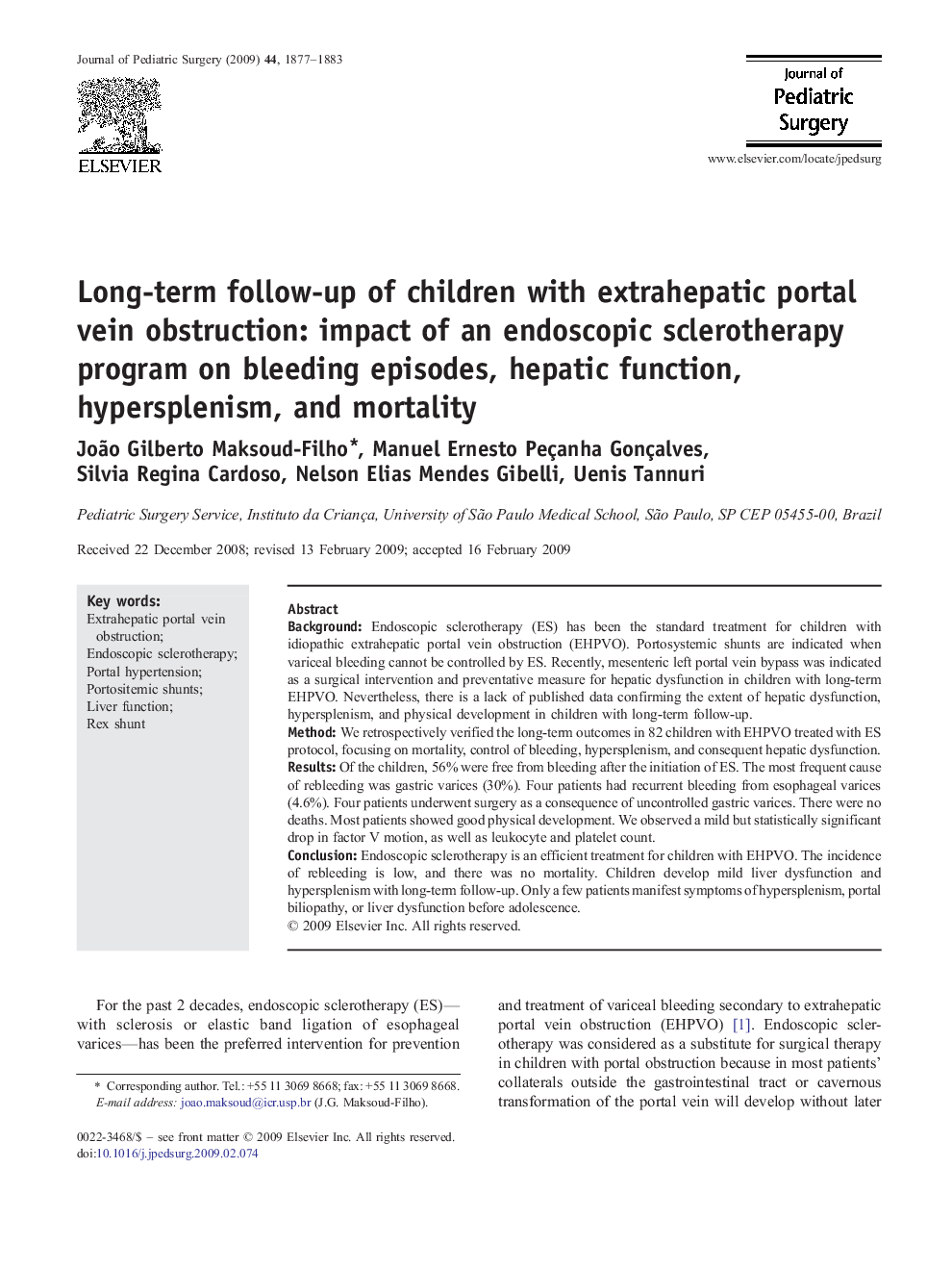| Article ID | Journal | Published Year | Pages | File Type |
|---|---|---|---|---|
| 4157876 | Journal of Pediatric Surgery | 2009 | 7 Pages |
BackgroundEndoscopic sclerotherapy (ES) has been the standard treatment for children with idiopathic extrahepatic portal vein obstruction (EHPVO). Portosystemic shunts are indicated when variceal bleeding cannot be controlled by ES. Recently, mesenteric left portal vein bypass was indicated as a surgical intervention and preventative measure for hepatic dysfunction in children with long-term EHPVO. Nevertheless, there is a lack of published data confirming the extent of hepatic dysfunction, hypersplenism, and physical development in children with long-term follow-up.MethodWe retrospectively verified the long-term outcomes in 82 children with EHPVO treated with ES protocol, focusing on mortality, control of bleeding, hypersplenism, and consequent hepatic dysfunction.ResultsOf the children, 56% were free from bleeding after the initiation of ES. The most frequent cause of rebleeding was gastric varices (30%). Four patients had recurrent bleeding from esophageal varices (4.6%). Four patients underwent surgery as a consequence of uncontrolled gastric varices. There were no deaths. Most patients showed good physical development. We observed a mild but statistically significant drop in factor V motion, as well as leukocyte and platelet count.ConclusionEndoscopic sclerotherapy is an efficient treatment for children with EHPVO. The incidence of rebleeding is low, and there was no mortality. Children develop mild liver dysfunction and hypersplenism with long-term follow-up. Only a few patients manifest symptoms of hypersplenism, portal biliopathy, or liver dysfunction before adolescence.
